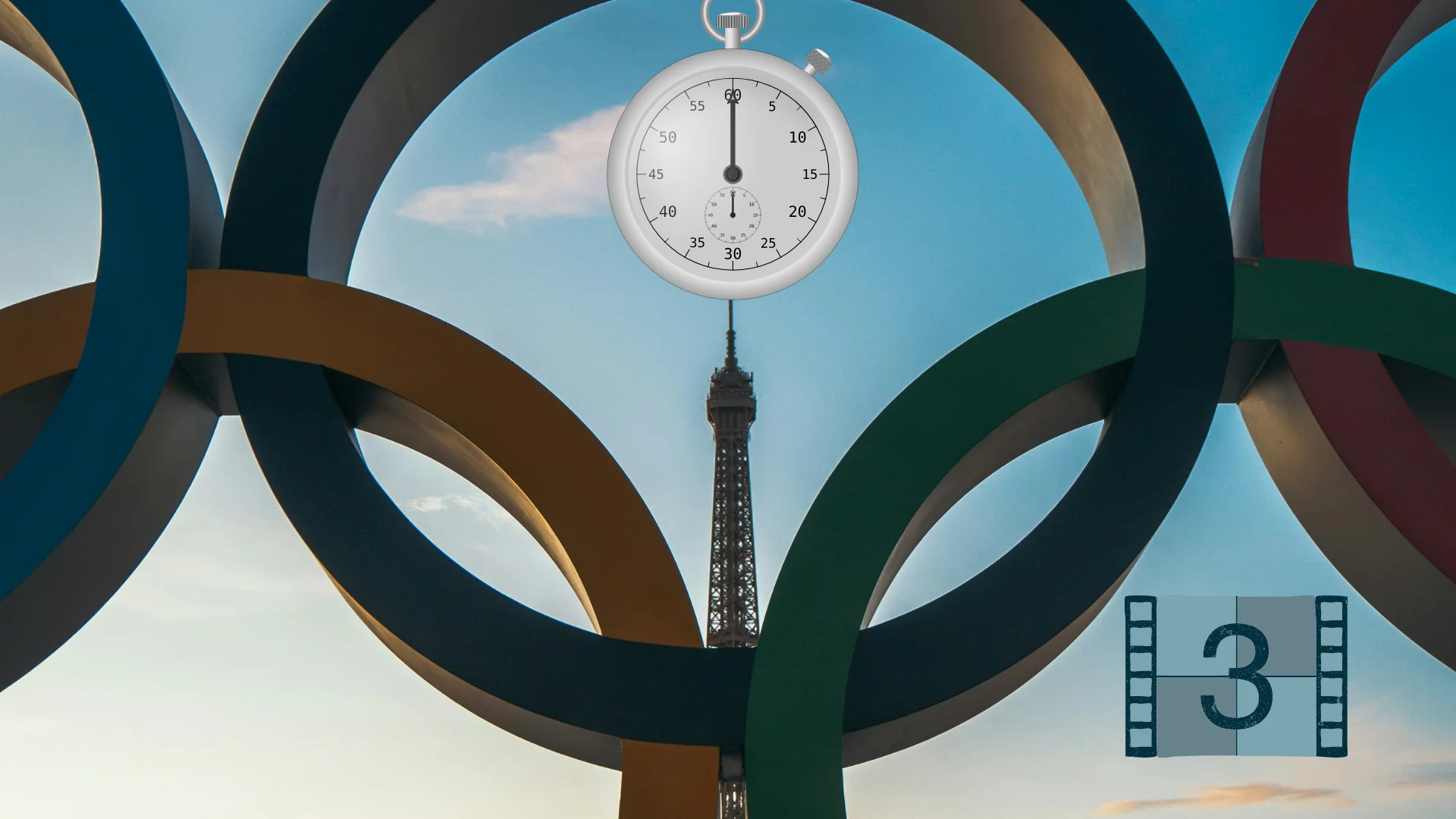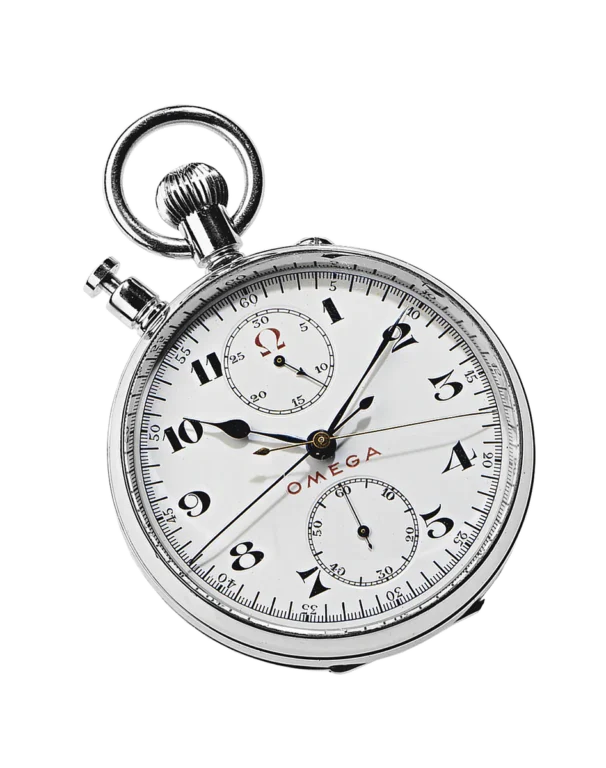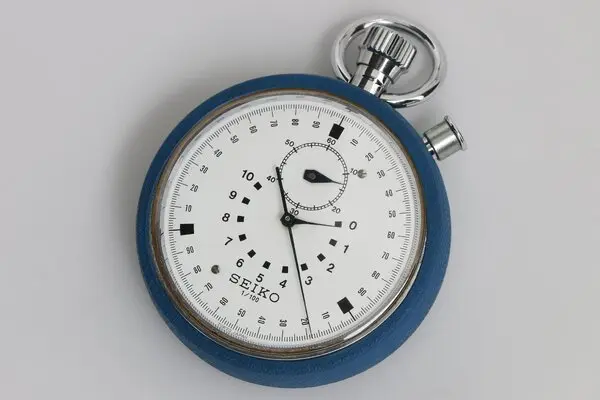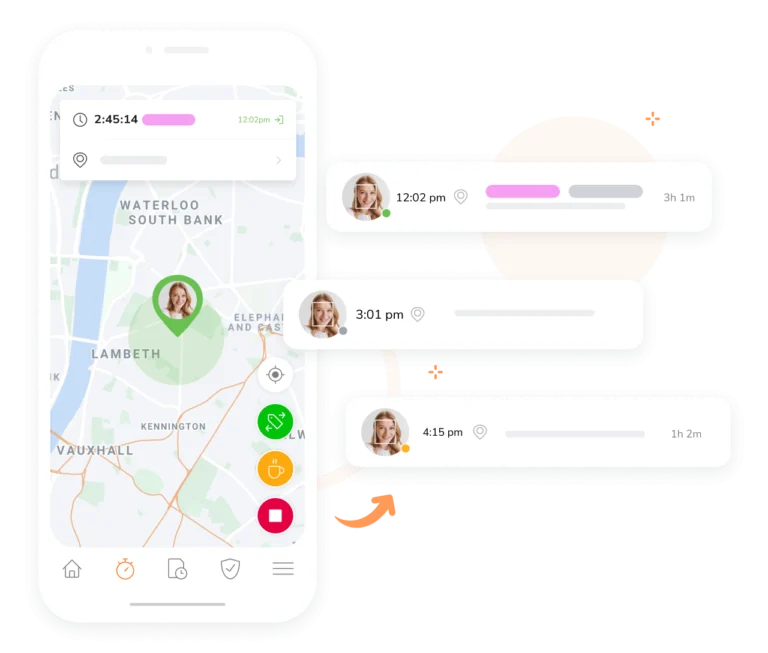Seize the Moment: The Evolution of Olympic Time Tracking

With the whole world watching the games, timekeeping remains the essential thread that weaves together the fabric of Olympic competition, playing a pivotal role in determining medal winners.
Today, modern Olympics timekeeping devices can capture 10,000 images per second and measure time to a thousandth of a second, requiring up to 450 tonnes of equipment.
This essential aspect has been continuously revered and refined over the years, ensuring accuracy and fairness in the pursuit of victory.
From ancient sundials to state-of-the-art technology, here is the evolution of timekeeping in the Olympics:
It takes time to track time.
Image by Mark Caldicott from Pixabay
Ancient Greece: The Original Olympic Games: Sundials and Water Clocks
Although it cannot be stated certainly that a time tracking method was particularly defined in Ancient Greece Olympics, timekeeping in this period is said to have relied on primitive methods such as:
- Sundials: Devices that rely on the shadows cast by the sun on a flat surface marked with hour lines to track the passing of time.
- Water Clocks (Clepsydras): Typically involving a container that fills or empties at a steady rate, and the passage of time is indicated by the level of water.
These devices would have lacked the precision needed for accurate time-based records, particularly for the nature of the Games that requires the measuring of time to the nearest millisecond.
Did You Know!?
- The Olympics, believed to have started around 776 BC, began in Ancient Greece at Olympia (now in southern Greece) as a religious festival in honor of Zeus, occurring every four years.
- The four-year gap between the games was known as an ‘Olympiad’ and was used for dating events, with time measured in Olympiads rather than years.
- For instance, an event occurring two years after the first recorded Olympics would be described as happening in the second year of the first Olympiad.
- The original Olympics went through a period of dormancy until the modern Games were revived with the formation of the International Olympic Committee (IOC) in 1894 as a non-profit, independent international organization.
1896: The Modern Olympic Games: The Stopwatch
The first modern Olympic Games in 1896, held in Athens, Greece, featured 43 events that relied largely on the stopwatch for time tracking. The stopwatch was used to start races and had to be transported by bicycle to the finish line, ahead of the competitors.
Inconsistencies and inaccuracies were unavoidable with such tools in Olympic time tracking, as stopwatches were often started at slightly different times and various brands and types recorded times differently.
1916: The First mechanical stopwatch: The Mikrograph
As the question of fairness and uniformity continued to be raised, Swiss watchmaker, TAG Heuer, was assigned time keeping in the Games and made the first mechanical stopwatch in the world in 1916 to be used by all judges.
The Heuer Mikrograph was accurate to a thousandth of a second, when its precedents were only accurate to around a fifth of a second.

Image by Omega
1932: Omega and Olympic Time Tracking: Chronographs
In 1932, Swiss watchmaker Omega was entrusted to take the reins of time keeping for the Los Angeles Olympics and has been the official time keeper since.
Omega supplied 30 rattrapante chronographs, also called split-seconds chronographs, which are mechanical watches designed to measure two simultaneous events with different durations.
The term “rattrapante” comes from the French word “rattraper,” meaning to catch up or recover.
These chronographs were accurate to a tenth of a second and featured a split-seconds function to enhance lap timing.
However, to reduce human error, timings had to be averaged from six different chronographs used by six separate judges.
1948: Electronic Timekeeping: Machine-dominated Timekeeping
In 1948, human timekeepers were replaced by automated timers that used photoelectric cell technology at the Olympic Games London.
Nicknamed ‘Magic Eye,’ the Racend Omega Timer, was introduced and described as a camera that films time.
The timer’s photoelectric cells recorded times to the nearest hundredth of a second when the finish line was crossed, using a thin light beam.
1956: Omega’s Swim-O-Matic
Omega introduced the Swim-O-Matic, an automatic timing system that recorded swim times when it detected a swimmer touching the pool ends.
This system was an early version of today’s touchpads, initially weighing 150kg and eventually reduced to just 1.2kg by the 1980 Olympics.

Image by The New York Times
1964: Seiko Joins the Olympics
The 1964 Olympics in Tokyo (Tokyo 1964) saw Japanese watchmaker Seiko becoming the official timekeeper for the year.
Despite its inexperience in sports timekeeping at the time, Seiko successfully provided 36 models and 1,278 timing instruments for the Games, including stopwatches and crystal chronometers.
This role proved beneficial, leading to the development of the first Quartz watch, the Astron, in 1969.
1984: Omega’s False Start Detection
In 1984, Omega introduced false start detection devices for Olympic running events.
These devices were highly sensitive starting blocks that detected even the slightest pressure placed on them.
The blocks started the timing as soon as an athlete’s feet left them, enabling accurate false start detection.
2006: Wearable Timekeeping Technology: Ankle Transponders
At the 2006 Olympics, Omega provided speed skaters with wearable timekeeping devices—transponders designed for their ankles.
These transponders used radio signals to capture precise time measurements for each race.
Image by thebridge
2012: Quantum Timer: One millionth of a Second
The London 2012 Olympics saw the unveiling of Omega’s Quantum Timer, a revolutionary device capable of measuring time to one millionth of a second.
The timer was five times more accurate than previous models, marking a new era in sports timekeeping.
2024: Technology and AI at the Paris Olympics
Today, the 2024 Paris Olympic time tracking featured the increased integration of computer vision technologies as Omega introduced AI-driven computer vision cameras that provided detailed athlete performance data to judges.
The company also brought 350 tons of equipment for timekeeping and specially designed starting blocks equipped with sensors.
The sensors measure force 4,000 times per second and provide data to on-site computers, detecting potential false starts with a precision of up to a tenth of a second.
The event features about 550 official timekeepers and 900 volunteers to oversee 32 sports.
The IOC is also set to use AI for athlete safety, broadcast improvements, and energy management. AI will monitor social media for abuse, create highlight videos, aid in talent identification, and support sustainability efforts.
The Future and Beyond: Time Tracking Software
Software are increasingly defining the future of technology, revolutionizing how we interact with information and services.
The Paris 2024 Olympics app exemplifies this trend and how digital solutions can provide seamless, real-time access to crucial event details, offering updated schedules, customizable notifications, ticket management, an interactive venue map, and Augmented Reality (AR) elements.
Similarly, time tracking software holds significant potential for advancing the accuracy and efficiency of sports timing.
While time tracking software are still far from Olympic timekeeping, here’s how such software could evolve for the future:
- Geofencing and GPS: Geofencing is a location-based technology offered through time tracking software that creates virtual boundaries around a specific geographic area. When a device with GPS or other location-based services crosses these predefined boundaries, it triggers a predefined action or alert. Such tech, if transitioned into wearable technology for athletes, can be used to start timing when an athlete enters a specific zone or to monitor their movements during events.
- Data Management: Time tracking software excels in organizing and analyzing large datasets. It can be used to track and compare athletes’ performances over time, providing valuable insights for training and competition.
- Identification and Tracking Tech: Identification and tracking tech offered by time tracking software such as RFID, face recognition, and NFC could revolutionize Olympic operations. Such tech can enhance athlete and equipment tracking by automatically recording data, bolstering security and streamlining access control by quickly verifying identities, and enabling contactless interactions for tickets and transactions, facilitating seamless venue access and enhancing the spectator experience.
- Real-Time Monitoring: Modern software can offer real-time tracking and monitoring, which could be integrated into existing systems to provide immediate feedback and performance analysis.
- Accuracy and Precision: While not yet matching the millisecond accuracy of dedicated sports timing devices, time tracking software can be enhanced with similar precision technologies to provide reliable data. If adjusted, this technology has the leverage of being weightless, reducing the need for heavy equipment.
- Automation: Automating time tracking and analysis can reduce human error, ensuring consistent and accurate timing, which is crucial in high-stakes competitions like the Olympics.
- Future Potential: With advancements in wearable technology and IoT, time tracking software could evolve to capture more precise timings, potentially integrating with existing systems to enhance accuracy and functionality.
While there is a significant gap to bridge and current time tracking software may not yet reach the level of sophistication, precision and functionality of Omega-designed time trackers used in elite events, its improvements in data management and real-time monitoring are promising.
Related Content:
100% FREE Wrestling Attendance App
100% FREE Time Tracking Software with Geofencing




